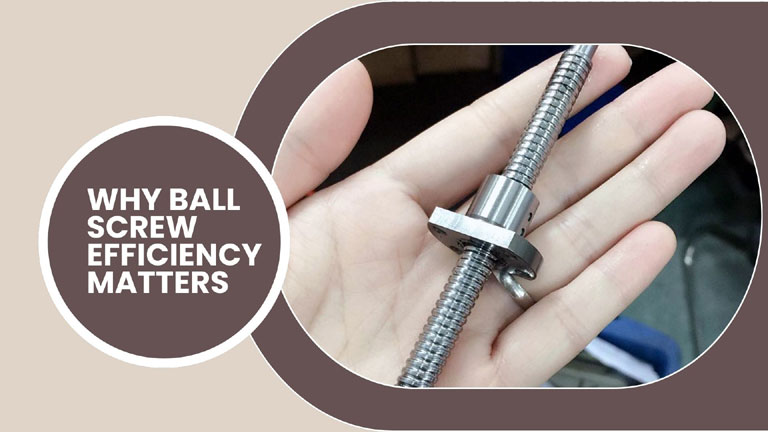
Today’s mechanical systems must offer precision and performance to keep up with a fast-paced industrial landscape. Ball screws play a key role in these industries. These devices convert rotary motion into linear movement accurately, making them ideal for the aerospace, robotics, and medical equipment sectors.
When comparing industrial ball screw solutions, individuals focus on the efficiency of these devices. They need ones that offer smooth movement while saving energy. Thermal stability and load capacity are also of importance. Why is ball screw efficiency so important, and how do these devices drive efficiency in industrial sectors?
The Basics of Ball Screw Efficiency
Ball screw efficiency is vital because a high-efficiency device minimizes losses from heat and friction. More input torque is converted into usable linear motion. When ball screws are inefficient, CNC machines operate at lower feed rates and consume more energy to complete tasks. Components also tend to wear down more rapidly. When these devices are used in medical imaging systems, low-efficiency ball screws can negatively impact imaging precision and the responsiveness of the machines used in these processes.
Factors Impacting Ball Screw Efficiency
Several factors determine the efficiency of a ball screw. Lubrication is the foundation of ball screw efficiency, as any friction leads to energy loss in mechanical systems. Lubricants minimize this friction, allowing the machine to operate smoothly while using less energy. Furthermore, lubrication protects the machine from rust and oxidation.
Preload also plays a role in ball screw efficiency. An internal force is applied to the device assembly to eliminate axial play and backlash. This process increases positional accuracy and rigidity while boosting rolling friction between the components. Excessive preload increases resistance, while insufficient preload reduces precision and may result in ball skidding.
A larger lead angle leads to a more efficient ball screw, but it could compromise load capacity. A consistent load direction increases ball screw efficiency, while direction reversals lead to more internal friction and dynamic losses. Operating conditions also play an important role in ball screw efficiency. Individuals must consider factors such as temperature, humidity, and vibration when choosing industrial ball screw solutions to ensure the right devices are selected.
The Importance of Ball Screw Efficiency
Do you know that high-efficiency ball screws lead to lower energy costs and carbon emissions? Purchasing teams cannot afford to discount the importance of ball screw efficiency. A company will waste less energy when running its equipment around the clock.
Furthermore, efficient ball screws lead to less wear and tear on machines. The company saves on repair and maintenance costs while experiencing less downtime. Reliable machines are essential in many industries, including aerospace and medical device manufacturing. High-efficiency ball screws ensure this reliability.
The responsiveness and precision of machines increase when high-efficiency ball screws are used. Movements can be completed in less time without impacting accuracy, allowing a company to gain a competitive edge. Turn-around times decrease, leading to increased customer satisfaction.
Increasing the Efficiency of Ball Screws
Companies must use the correct lubricant to increase the efficiency of ball screws. They need to ensure preload settings are optimized and closely monitor the alignment and installation of these devices. The correct lead angle is required, and companies should monitor the performance of machinery in real time to make adjustments where needed. Taking these steps can increase the efficiency of ball screws by up to 10%.
Ball screw efficiency continues to increase in importance as every company needs to remain competitive. Global commerce has increased the importance of meeting customer needs quickly and accurately. Efficient ball screws offer numerous advantages and ensure any organization using them is prepared to meet the challenges of its industry.


